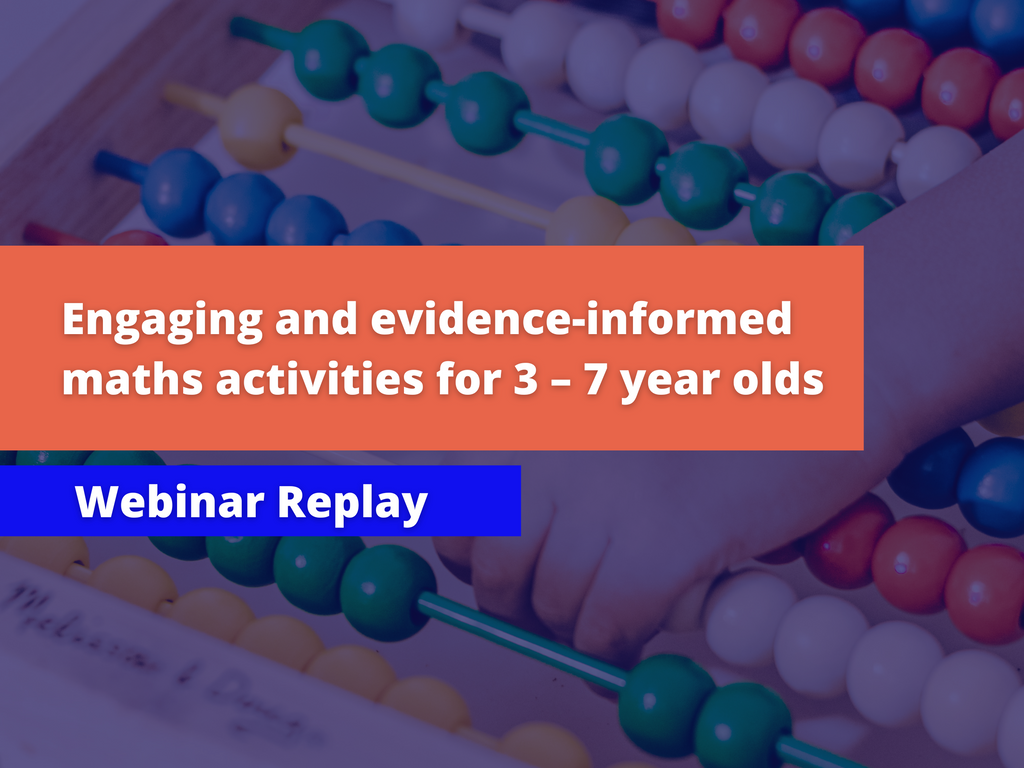Evidence for Learning: Improving mathematics in the early years with children aged 3 – 7 years
Improving mathematics in the early years with children aged 3 – 7 years
Download the Recommendations Poster
Uploaded: • 53.6 KB - pdfFirst Edition
Published
School Phase
Primary, Early Childhood
Mathematics plays a key role in children’s development and helps them make sense of the world around them, interpret situations, and solve problems in everyday life, whether that’s understanding time, sharing amounts with their peers, or counting in play.
Not only is mathematics relevant for children’s current lives, but early mathematical understanding is strongly associated with later school achievement.1
It is important to get the foundations of mathematical development right in early years as we know that it can be hard for children, especially those experiencing disadvantage, to catch up in later years.
This Guidance Report supports Australian educators and leaders with the best available international evidence and practical examples for mathematics practice across the early years.
The report highlights the importance of:
- Understanding what each child knows; children’s typical development in mathematics; and, how to use targeted support
- Engaging children in mathematics activities in ways that are relevant for their development, including using manipulatives and representations
- Embedding mathematics experiences throughout the day, and making the most of opportunities to reinforce mathematics concepts and language as they arise.
The report is aimed primarily at mathematics and educational leaders (sometimes referred to as ‘middle leaders’), senior leaders such as school leaders and centre directors, and other staff with responsibility for leading improvement in mathematics in early learning and primary school settings. Educators will also find this guidance useful as a resource to aid their day-to-day practice.
This guide is not intended to provide a comprehensive guide to mathematics teaching and learning. The recommendations focus on particular areas where there is evidence that certain practices can make a significant difference to children’s learning.
We hope this guidance gives early years educators and leaders – across early learning and lower primary school settings – shared, fun and easy evidence-informed ideas to support mathematics planning and practice.
Recommendation 1: Develop educators’ understanding of how children learn mathematics
Recommendation 2: Dedicate time for children to learn mathematics and integrate mathematics throughout the day
Recommendation 3: Use manipulatives and representations to develop understanding
Recommendation 4: Ensure that teaching builds on what children already know
Recommendation 5: Use high quality targeted support to help all children learn mathematics
Evidence for Learning has produced another Guidance Report, Putting Evidence to Work: A School’s Guide to Implementation which can be used as a guide as you plan to implement changes in your school setting relating to improving mathematics. Based on the evidence and general principles from implementation science, this Guidance Report may also be useful for those implementing changes in early learning settings to improve mathematics.
Implementation can be described as a series of stages relating to thinking about, preparing for, delivering, and sustaining change. The section ‘Acting on the guide’ in the ‘Improving mathematics in the early years with children aged 3 – 7 years’ Guidance Report, suggests a range of strategies that you might find helpful in planning, structuring and delivering a whole‑setting/school approach to mathematics.
E4L thanks the Australian researchers and educators who provided input to and feedback on drafts of this Guidance Report.
We acknowledge the particular insights from Professor Marina Papic (Australian Catholic University), James Ellis (Lead Teacher – Birth to Year 6 setting, South Australia), Dr Leigh Disney (Monash University), and Dr Liang Li (Monash University). We also thank the leaders and educators who contributed illustrations of practice on how to put the evidence into action.
This Guidance Report and supporting materials are licensed under a Creative Commons licence as outlined below. Permission may be granted for derivatives, please contact Evidence for Learning for more information.
This work is licensed under a Creative Commons Attribution-NonCommercial-NoDerivatives 4.0 International Licence.
References
1 Duncan, G., Dowsett, C., Claessens, A., Magnuson, K., Huston, A., Klebanov, P., Pagani, L et al. (2007). School Readiness and Later Achievement. Developmental psychology. 43(6), 1428. https://doi.org/10.1037/0012 – 1…
Download the Guidance Report
Uploaded: • 4.3 MB - pdfDownload the Recommendations Poster
Uploaded: • 53.6 KB - pdfGuidance Reports

Webinars
